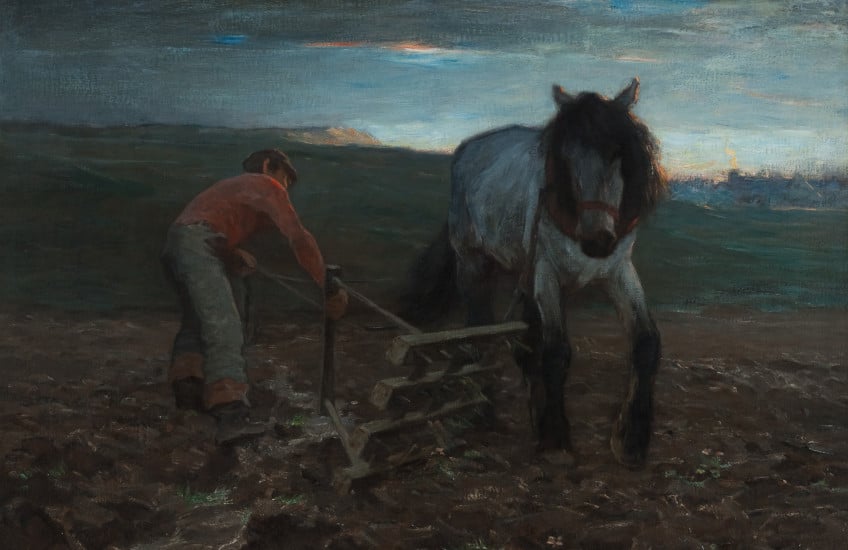
>> My name is Marla Dobson and I am the Assistant Curator, Canadian Art at Agnes Etherington Art Centre at Queens University. I am also the curator of Nocturne, an exhibition exploring the night and the Canadian artistic imaginary. One of the works in the exhibition that caught my eye was Horatio Walker’s Turning the Harrow – Early Morning, completed in 1898. This work was painted on the Île d’Orléans, Quebec and depicts a lone farmer and his horse tilling the field by the light of the rising sun. Walker was a highly successful artist who split his time between New York City and rural Quebec and was known primarily for his canvases of farm animals and French Canadian labourers. Following in the footsteps of artists of the Barbizon School, Walker was often called the “American Millet,” after the realistic depictions of French peasants by Jean-Francois Millet. His paintings sold for record prices, principally in the United States and were highly sought after in the first decade of the 20th century. However, as the century progressed changing tastes in art meant that Walker’s work rapidly fell out of favour and was even deaccessioned from major museum collections. The story behind this canvas is therefore deeply rooted in historical moment and a period of transition and history of art in North America.
>>In this audio guide we will delve into the rich history of Walker’s Turning the Harrow – Early Morning through the eyes of two art curators and the local farmer, bringing to light the stories behind the painting from the perspective of settler Canadian art history, as well as the expertise of someone who has worked the land in much the same way as Walker’s lone figure. We are joined by Anne-Marie Bouchard, Curator of Modern Art at the Musée national des beaux-arts du Québec; Charles Summers, proprietor of Salt of the Earth Farm in Kingston, Ontario and Agnes’s own Chief Curator and Curator of Canadian Historical Art, Alicia Boutilier.